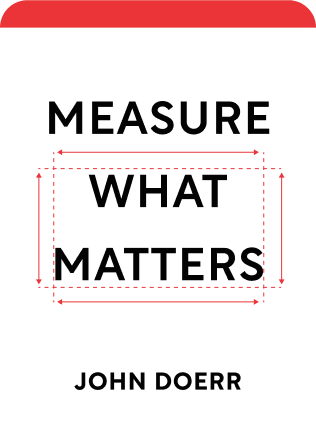

This article is an excerpt from the Shortform summary of "Measure What Matters" by John Doerr. Shortform has the world's best summaries of books you should be reading.
Like this article? Sign up for a free trial here .
What is OKR culture in the workplace? What are some examples of OKR culture, and how it works?
OKR culture in the workplace is a culture of transparency, purpose, and connection. You can find elements of OKR culture in workplaces that have implemented OKRs and use them to their best possible effect.
Learn more with these examples of OKR culture in the workplace.
OKR Culture Examples
These examples of OKR culture can help you understand how building a positive culture works. These examples of major companies who successfully built OKR systems can help you understand how it works.
Example #1 of Building a Positive Culture: Lumeris
Implementing OKRs successfully requires transparency and accountability. These traits can often foster a positive workplace OKR culture, but sometimes, a culture is too negative and distrusting for OKRs to work. If that’s the case, you need to first focus on building the company’s culture. Once you’ve established the foundation of trust, you can then implement OKRs, and they’ll help further deepen trust and interdependence in your community.
Lumeris is a tech firm that provides expertise, services, and software to health care providers and patients. When Andrew Cole, then head of HR, arrived at Lumeris, the company had already been using OKRs for a few quarters. But Cole quickly realized that their use was superficial—at the end of the quarter, people would just adjust the numbers on the OKR platform and say they’d met their goals. There was no accountability or buy-in. Many people didn’t even know their OKRs.
But the problem went beyond the way Lumeris used OKRs. The failed OKR system was the result of a negative workplace culture, which Cole needed to address before OKRs could be effective.
Problem #1: Executives had introduced OKRs in an attempt to merge the conflicting cultures of Lumeris (a risk-taking and transparent company) and their partner, health insurance company Essence (risk-averse and protective of their proprietary methods). As long as these two organizations remained separate entities, with two separate cultures, the OKR system couldn’t function successfully.
- Solution: Lumeris incorporated Essence under its own umbrella.
Problem #2: Lumeris’s stated values included passion, teamwork, personal ownership, and accountability, but many of Lumeris’s top leaders were autocrats, uninterested in reinforcing these values. This created a gap between the company’s stated values and its behavior, which created distrust among employees.
- Solution: Cole let the autocratic leaders go and hired ones who exemplified the company’s values.
Problem #3: Although Lumeris’s new leadership team told employees that they had the right—the obligation, even—to hold executives accountable for living Lumeris’s core values, employees initially declined to give feedback to leaders. They were afraid of being punished for speaking too bluntly.
- Solution: Executives and HR leaders spoke to each employee personally to reiterate that they’d reward employees for upholding the culture’s values, collaborating, and being transparent and honest.
Problem #4: Many people in HR weren’t a good fit for the new culture Cole was trying to build. Many in middle management also weren’t on board with the new culture changes.
- Solution: In less than 18 months, Cole and the executives replaced 85% of their HR staff. Then, they worked on retraining old managers and hiring new managers.
Reintroducing OKRs to Nurture and Sustain the Culture
With the company’s culture now providing a strong foundation, HR was finally ready to reintroduce OKRs. Cole required everybody in the company to be retrained in OKRs, then instituted a 60-day pilot run with 100 employees. The division’s senior vice president held his employees accountable by reading their OKRs closely and calling employees out when the OKRs didn’t make sense or the metrics were misaligned with the current data. This prompted employees to take their OKRs seriously.
At the end of the pilot, 98% was using the OKR system and 92% said they now understood what their managers expected of them.
Getting Buy-In by Focusing on Culture
As they rolled out OKRs with the entire 800-person staff, Cole and his HR team focused on questions that linked OKRs to the company’s culture and values. They discussed with managers and staff:
- Why does our work matter? How does our work contribute to the company’s goals and values?
- Why does transparency in a company matter? Why would you want peers from other divisions to know what your goals are?
- Why does accountability matter? How can we both hold ourselves and others accountable while remaining respectful of others’ failings and forgiving of our own?
- How can we help one another reach our objectives? How do we make a strong case for our objective so other teams are willing and excited to make it one of their own priorities and help us make it to the finish line?
- How do we know when it’s time to revise an OKR, or time to scrap it altogether?
At the end of the quarter, 75% of employees were engaging with the OKR system and voluntary attrition was down.
Zume Pizza
The goal of Zume Pizza is to use technology to quickly deliver cheap, healthy, delicious pizzas to consumers in the Bay Area. (Shortform note: In January 2020, Zume Pizza rebranded itself as Zume, Inc., a company that creates the technological infrastructures needed to make food production and delivery more efficient and less wasteful.) Zume Pizza is one company that recognizes the subtler benefits of using the OKR system. These side benefits help build a positive OKR culture. Here are some of those side benefits.
Side Benefit #1: OKRs Force Executives to Set Realistic Goals
When Zume co-founder Alex Garden worked as a general manager for Microsoft’s Xbox Live, he found that the objectives set by executives were often unrealistic or impractical because these leaders weren’t in touch with the day-to-day operations of the company.
Conversely, executives who use OKRs have to figure out what key results will lead to their objectives. They need to know the how, as well as the what. OKRs and CFRs provide leaders with a reality check.
Side Benefit #2: OKRs Teach Future Managers How to Be Leaders
Garden says that when you’re an employee, you’re often evaluated based on the volume of your contributions to the company. If you produce a lot, you’re promoted, and eventually, you find yourself in a manager position. Now, instead of being evaluated by the quantity of your work, you’re evaluated by the quality of your decisions. You’re paid to think, rather than do.
However, no one tells you that as a manager, working smarter matters more than working harder. Furthermore, no one tells you how to work smarter. Consequently, when problems arise, you just keep working harder and harder, because that’s what you’ve always done and that’s what’s worked in the past.
One major benefit of the OKR system is that it forces everyone, at every level of the company, to work smarter:
1) It forces everyone to align their goals with the company’s goals, and to understand exactly how their specific goals and activities contribute to the company’s success. In other words, it forces every employee to think like a manager.
2) It forces people to be specific about their priorities—you can only choose three to five goals, and you need to know exactly how you’ll achieve them and how you’ll measure their success. Again, employees learn to think like managers. Then, as a manager, she already knows how to make quality decisions and lead others to do the same.
3) It forces all employees to take ownership of their ideas and goals and to have a voice. In some organizations, only the loudest members are heard. In OKR organizations, everyone’s voice is heard because everyone’s goals are transparent. Everyone has to take on the essential leadership skills of setting goals, making them public, soliciting feedback, and defending their priorities.
Startups that don’t groom their members to become executives miss a valuable opportunity. They either end up promoting employees who don’t know how to lead, or they gradually replace the original team with outside hires. Neither is good for a company’s morale or success.
Side Benefit #3: OKRs Create a “Culture of Consideration”
A “culture of consideration” is one in which each member of the team understands how his or her work affects others in the company. Members also understand how their work depends on the work of others.
For example, at a pizza delivery service like Zume, the delivery fleet manager, Mike, might have a key result of expanding the radius of the company’s pizza delivery by a certain date. But this goal depends, in part, on whether the manufacturing team can get all the vehicles ready for the expansion.
Let’s say the manufacturing team is running behind schedule. At another company, this might cause Mike to feel resentful and anxious—his ability to achieve his goal is at risk, and he feels out of control of the situation. He might confront the leader of manufacturing, Joe, pressuring him to hurry up. This interaction ends in hostility between Mike and Joe and, possibly, the failures of their respective goals.
However, in any company that implements OKRs, Mike can simply say to Joe, “This KR is at risk.” There’s no blame in this objective statement, and Joe likely already knows the KR is at risk: The KRs of all departments are transparent, and Joe has already agreed to this KR. Additionally, because Mike and Joe know their work is interdependent, they’ll advocate for one another—if Joe needs more resources from upper management to get his piece of the job done, it’s in Mike’s best interest to help him get them.
These examples of OKR culture can help you visualize the right culture for your company, and build it using OKRs.

———End of Preview———
Like what you just read? Read the rest of the world's best summary of John Doerr's "Measure What Matters" at Shortform .
Here's what you'll find in our full Measure What Matters summary :
- How Google uses OKRs to rally 100,000 employees in the right direction
- How to avoid setting useless OKRs, and how to set great ones
- Key subtle behaviors your team must master to make OKRs work






